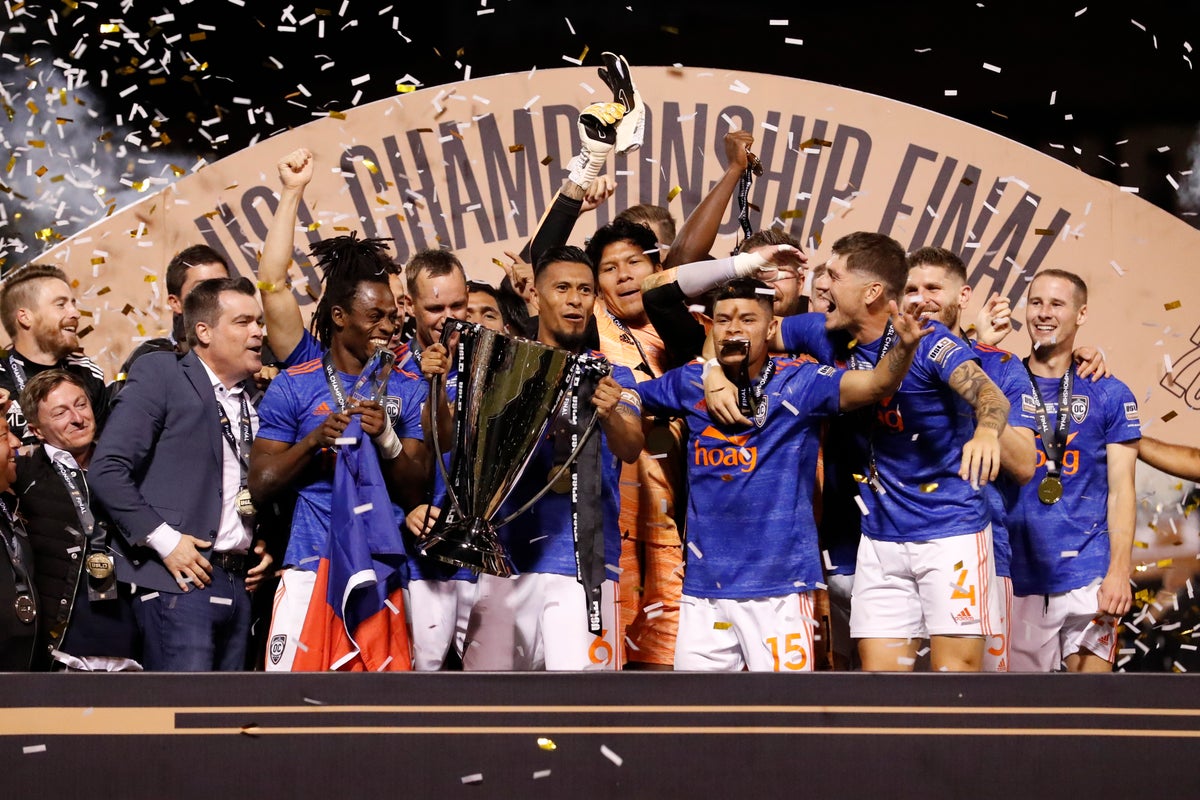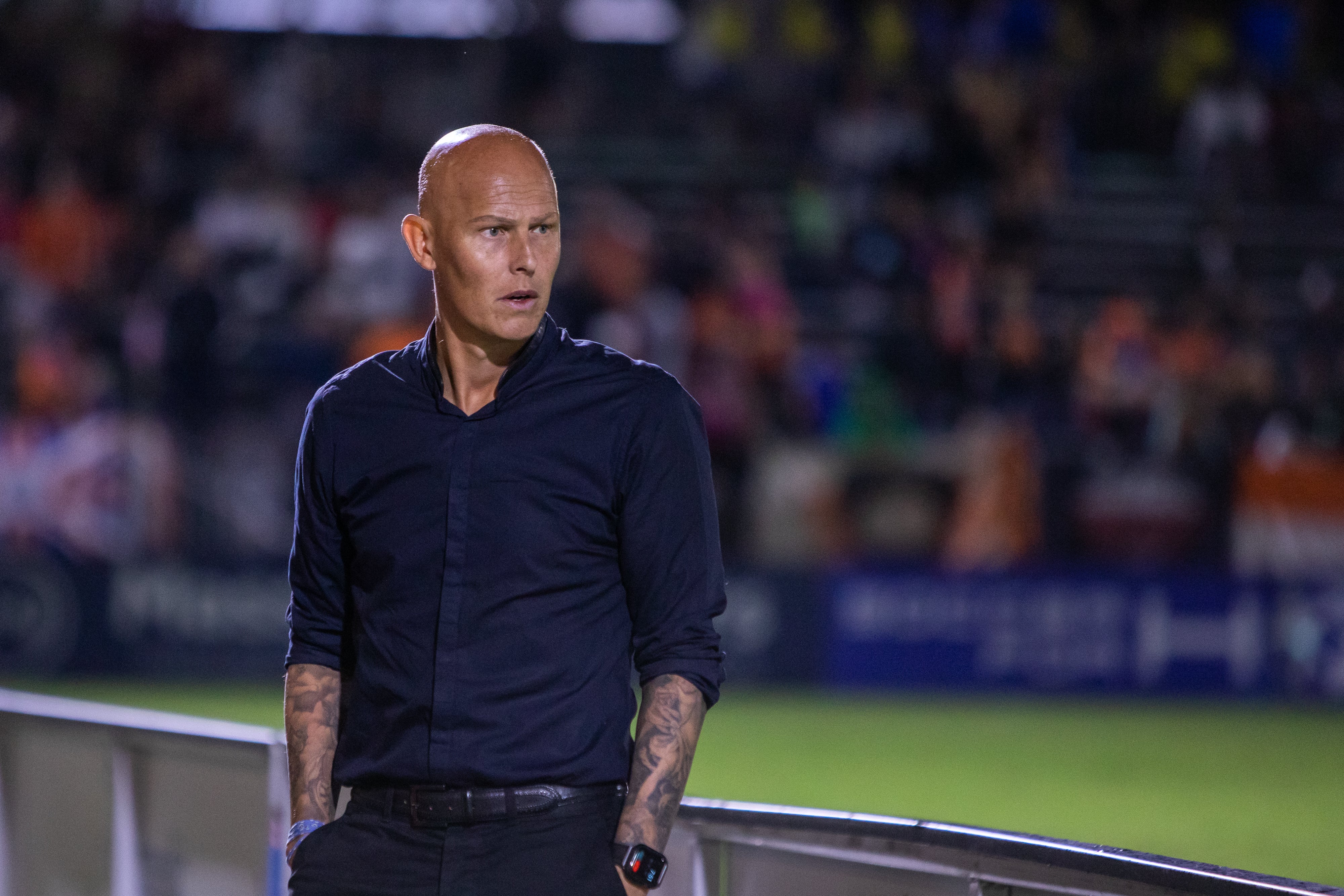
It’s far from unheard of for American football players to wind up in the English game, though between Stateside action and appearing in the Premier League there’s often a midway point on the European mainland.
Years ago, quality might have been a consideration stopping clubs making those signings directly. Then it was work permit problems, as Brad Friedel might be among those to attest to. There are still stringent rules in place now regarding age and ‘points’ overseas players must accumulate to earn entry to these shores, but even so we might see the number of American-trained players on the increase soon.
A big reason for that is the rise in player pathways being created for talented youngsters to showcase their abilities and find access to Europe prepared by accommodating clubs - who are increasingly seeing this development model as a way to grow both revenues and their own competitive level.
It is not, however, necessarily in the higher-profile MLS where this change in approach is taking root; instead it’s the USL Championship, the ‘second’ tier of Stateside soccer, though there’s no actual regular link between the two in terms of promotion and relegation.
While some have departed USL as MLS expansion teams, others are now seeing the value and potential they have in their own league to write their own stories, with California-based Orange County SC one of those clubs who have most quickly, and effectively, adopted this strategy.
We don’t need to look far for their inspiration: it’s a regular theme around the Bundesliga, Ligue 1 and the Eredivisie, where several clubs are renowned for having elite academies, top-class coaching and a habit of selling players on for astronomical fees after contributing to first-team success.
James Keston is the man at the top of Orange County, the club owner who has overseen the change in approach and who freely admits he has seen what works in Europe, and is merely applying it to football in the USA: titles and transfers.
Initially, he had the opportunity to buy the MLS franchise in Portland. That moment passed by, but he ultimately returned to his roots to get involved in OCSC in 2016. “We wanted to put Orange County on the soccer map,” he told The Independent. It was a journey from somewhere near the bottom of the footballing world in terms of having an elite set-up, but that simply gave a big runway for improvement. “It was unprofessional, scouting was scattershot. There’s nothing revolutionary about what we’re doing on the global scene, we’re following a model which works.
“It’s a model for an Ajax or similar club: You have to commit to a dual role of developing players and competing for a championship. USL is an imperfect league and with good management you have the opportunity to do both things. We’re leaps and bounds ahead of where I hoped we would have been a couple of years ago.
“We’ve positioned ourselves as the professional pathway: we want young players, but the talents haven’t had a technical structure at 14, 15, 16. They’re not taught defensive responsibility and so on. We make sure they’re prepared to be part of a professional set-up and improve game understanding.”
Orange County might have a way to go before they can lay claim to every trait a club like Ajax have, but they’ve made a good start: several young players have now secured transfers into Europe and a trophy is in the cabinet too. That came courtesy of a dream introduction to coaching for the former Burnley, Preston and Southampton - among others - midfielder Richard Chaplow.
Having retired after ending his playing days at the club, Chaplow gained his Uefa A Licence in 2020 and his Pro Licence will follow in due course. “We got off to a good start against a local rival and never looked back,” the head coach told The Independent. He’s not wrong: they beat Tampa Bay Rowdies in the USL Championship final, with a “whirlwind start” yielding silverware following a 3-1 win.
This season was rather different, with the team finishing bottom of their conference. “Injuries a nightmare, off-field things, everything that could go wrong has done and we’re having to rise above it,” he said with equal understatement. Those issues have actually continued since we spoke: Orange County made headlines in the last couple of weeks when LA Galaxy were accused of seeking exclusive rights to the stadium OCSC play in, for the use of their second string team. Galaxy’s response suggested they were not considering that course of action, but the matter is far from resolved.

On the pitch remains Chaplow’s focus, and it’s there he can contribute most to ensuring the club follows the project they have set themselves: “We know how it works and what lies ahead. We’re just making sure we stay consistent to what we believe in, because the process worked last year and we believe it will again.”
And so the overarching approach of the club, and increasingly of the league, reaches the manager’s office - that ethos to give talented young players a platform, which in turn can lead to those transfers overseas.
The plan doesn’t end there either: it’s a two-transfer strategy which aims to benefit both clubs and players. Last year, teenage centre-back Kobi Henry was the representative example of that.
The Florida-born 18-year-old was able to get regular gametime as the club surged to glory in 2021, before being sold to French Ligue 1 side Reims for a USL record fee of $700,000.
Swiss-born Oliver Wyss, president of soccer operations and general manager at the club, explained how the absence of the single-entity contracts used in MLS - in other words, the league owns the players and negotiations with any buying clubs go through them - has given rise to a much sharper focus on development.
“The real return of investment in football is in player sales. Annually it’s $8-10bn and the US has participated very little in this,” he told the Independent. “In the USL we control player rights 100%, similar to Europe. So we can do business the same way as everyone else: develop players and move them on.
“We’ve been competitive but it’s the player development model and sales that we’ve been able to show works. Kobi was our fourth successful deal in the last two years. We’ve shown there’s a big market for the USL.

“Kobi has taken it to different numbers. We get a very nice transfer fee but the real thing is a future percentage of the player and that you pick the right club for them. Stade de Reims are playing a team with an average age of 23, 24 years old, then selling for big money to other clubs.”
Hugo Ekitike is a prime example here: the 20-year-old forward was a £25m target for Newcastle this summer, before joining PSG on loan with a view to a deal worth a total of £30m next summer. Put in those terms, it’s clear why the two-transfer strategy has a much bigger chance of paying off. A deal worth even half of that with a 10% sell-on clause would net the original developing club £1.5m, easily more than double the actual initial transfer.
The sell-on clauses OCSC aim to negotiate are in fact significantly higher, 15-20% - if they happen at all.
“There’s never a guarantee a player has a secondary transfer. There are key incentives in deals - appearances, international recognition - but it’s so important to find the right clubs who want to play young players rather than take a higher initial fee from a side where he won’t get anywhere near the team,” Wyss explains.
It doesn’t simply happen overnight, of course, that such a strategy can be decided upon and implemented.
A cultural shift was required, not just within the club but almost within the league itself. Previously there hadn’t been investment in infrastructures which allow young players to develop properly, for example, or even multi-year contracts. There’s also the incredibly difficult job of actually getting the first one over the line: convincing the youngsters initially that Orange County will give them the chance to play, developing them appropriately, getting performances out of them and then being able to persuade potential buyers that the talent can transfer from USL to their own European league.
Lots has to come together for that to happen, but when one success story becomes apparent, a bit of a rush can follow.
In this instance, Ronaldo Damus might have opened the floodgates: a forward now regularly playing in Sweden’s top flight after one prolific season with Orange County. Others have also moved on to Scotland, Germany and France, with more already near-certain to follow later this year and in 2023.
Orange County sales to European clubs
Aaron Cervantes, 20-year-old goalkeeper to Rangers
Bryang Kayo, 20-year-old midfielder to Wolfsburg
Ronaldo Damus, 22-year-old forward to GIF Sundsvall
Kobi Henry, 18-year-old defender to Stade Reims
Next in line:
Francis Jacobs, 17-year-old midfielder with “significant interest in Europe” including Rangers
Korede Osundina , 18-year-old forward
Now other clubs have adopted the approach and the league is actively encouraging such forward thinking, in contrast to their response to Keston when he took over. “Five, six years ago I told the league I wanted to do player development. The attitude was ‘why don’t you focus on selling hotdogs and tickets?’ Now look at USL and what they are doing with marketing and development - it’s a revolution which has happened over the last five years.”
That revolution is being led primarily by Mark Cartwright, previously a player in the English Football League and the former technical director at Stoke City. A little over twelve months ago he departed these shores to head Stateside once more and took over as sporting director of USL.
A driving force in advising clubs during transfers if they require it and showing them why development is vital for both growth and sustainability, he’s impressed with how well the California club have implemented their plan and has no doubts that a bad season will not derail their ambitions.
“Orange County are one of the shining lights. They’ve got the right infrastructure, the alignment of their vision: can we develop, win games and sell players? The president, sporting director and head coach are all on board in what they want to do with recruiting exceptional young talents and giving them a pathway,” he told The Independent.
“They are definitely top of the charts in terms of how they are doing it. Louisville are another who are exceeding expectations, El Paso and four or five teams who are really pushing ahead in this way.
“We’re looking at the bigger picture, the players have to continue getting into the first-team environment [after a transfer]. Then maybe he’s sold to a bigger club and that’s where clubs will make the bulk of the fee because that should be the big transfer. Clubs are buying into that model and young players are seeing what we’re doing - they’re rejecting MLS contracts to come and play here.
“Most of the kids in this country grew up watching European leagues and the dream of the athlete is to move there.”
So keep an eye on Ligue 1, and beyond. The young American talents now looking to break into those sides, and those leagues, might just be the next big-money transfers to reach the Premier League. With a significant cut of that fee heading back to USL clubs, of course.







